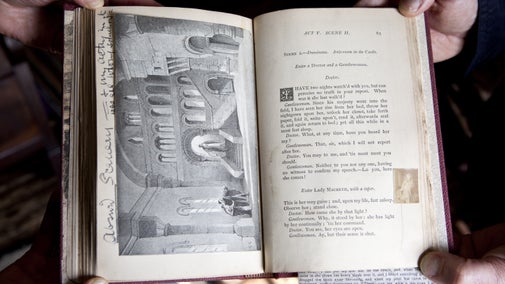
Discover more at Bath Skyline
Find out when Bath Skyline is open, how to get here, the things to see and do and more.

History hides beneath the surface along the Bath Skyline, from springheads and stone markers to Iron Age field systems. Previous finds have included pre-historic flints, Samian pottery and Roman coins. Evidence of Roman roads and burials have also been discovered. Find out more about the archaeological features of the different areas of this wide open space overlooking the city of Bath.
The northern edge of Bushey Norwood is formed by the rampart of an early Iron Age stock enclosure which is a Scheduled Ancient Monument of national importance. To the south of the rampart is a late Iron Age field system which includes evidence of a contemporary building.
Towards the southern end there’s a large standing stone. The origins of the stone are uncertain, but it may be a marker stone forming part of the 18th century racecourse or it was erected by Duncan Skrine in 1933 to commemorate the burial of a favourite horse.
The origins of a line of smaller standing stones running in a northerly direction also remain a puzzle.

There are a great number of archaeological features across the woodland and fields below Sham Castle Down, many with links to providing water to the city of Bath in past centuries. In Bathwick Woods there are remains of an 18th and 19th century water supply system for Bath developed by the Duke of Cleveland and Bath Corporation.
Stone spring markers signal the source of fresh spring water, which was transferred to the city by stone conduits and reservoirs. You can also see stone recorder houses, stone basins and water troughs.
The water trough could indicate that this area was used for grazing, whilst within the woods there’s evidence of extensive stone quarrying. In the field below there are signs of terracing and building platforms, which may show occupation and cultivation were carried out close to the stone quarries.
Within the fields of Rainbow Wood Farm, although not visible from the public footpaths, are Celtic field systems. These include the remains of a wind pump and stone reservoirs, the site of Flatwoods army camp and elements of the Medieval deer park boundary wall.
Within the area of Claverton Down there are former stone quarries, one of which is now the woodland play area. There are also spoil heaps from these quarries. The quarries contained the stone used during the Georgian period to build many houses in the city.
The cycle path which runs north from North Road alongside Monument Field is the boundary between the great deer park (to the east) belonging to the Bishop of Bath and Wells and the deer park (to the west) belonging to the Prior of Bath (the ‘Prior’s Park’).

Solsbury Hill was occupied as a hillfort during the early Iron Age, between 300BC and 100BC and one of the southernmost of fortifications across the Cotswolds. During this time, huts were built from timber and wattle and daub. A 20-foot-wide rampart was constructed around the settlement, flanked on both sides by dry stone walls.
In previous times, there were tales of a temple on the top to Bladud, the legendary king of the Britons, and that the visible remains were of a Saxon fort used in the siege of Bath in 577 AD.
Archaeological excavations in the area suggest that the site was occupied from about 500 to 100 BC with up to 30 huts in occupation at any one time. Possibly the huts were then burned and the rest of the settlement destroyed and abandoned.
In later history, Little Solsbury Hill is a possible site of the Battle of Badon, fought in around 496AD between the Saxons and the British. There is also evidence of medieval field systems on the hilltop.
The site also has a history of agricultural use. Barley was grown on the summit at the end of the 18th century and the hill was still under cultivation well into the 19th century.

Find out when Bath Skyline is open, how to get here, the things to see and do and more.
With 500 acres of woodland and farmland in our care at the Bath Skyline, there's plenty to explore. Discover nature, wildlife and views of the historic city from this natural viewpoint.

Bath Skyline is a one pawprint rated place. Discover spectacular views of the surrounding countryside and long walks for dogs and owners, no matter what the season. Find out more to help you enjoy your visit.

Learn about people from the past, discover remarkable works of art and brush up on your knowledge of architecture and gardens.
